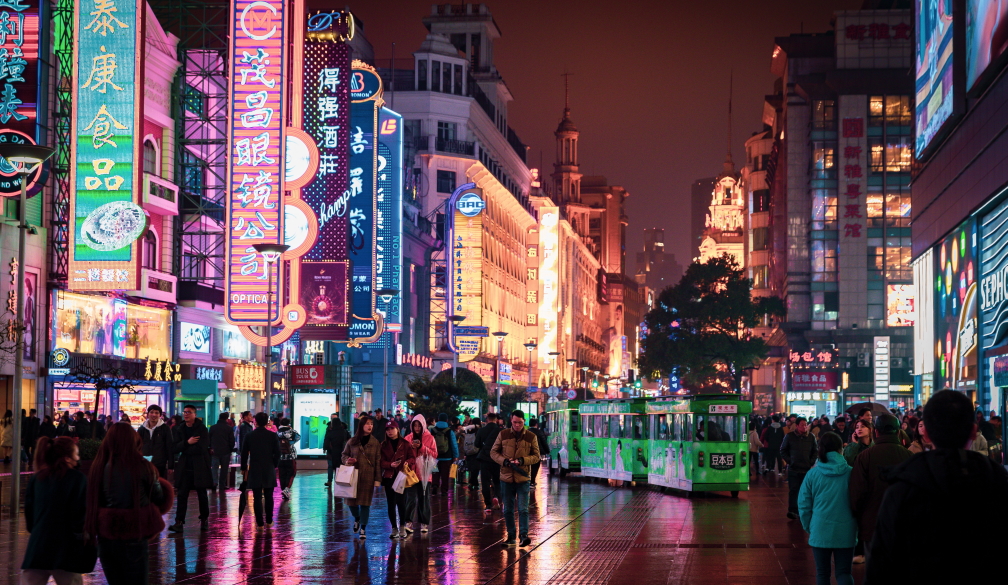The Street With The Most Coffee Shops

The street with the most cafes in the world is in Shanghai and is called Huaihai Zhong Lu, with nearly 50 cafes located on this boulevard, but it continues with Nanjing Xi Lu which appears in a second with 41 stores, followed by Wenhui Lu with 37.Fengjing Lu has the highest density with five cafes at 100 meters. On more than 15 streets in Shanghai, daywalkers will come across a cafe every 100 meters.
The largest number of cafes is located in the Lujiazui sub district of Pudong in the number of 164. Lujiazui is a heavily populated area of tall office buildings in Shanghai. The financial workers in the area work for hours and are under a lot of pressure and that is why they relied on coffee to feed their strength through their hectic time. Of all these coffee shops, most (149) are located in office buildings. Although the number of cafes is so large, they are always full and there are people waiting in line.
With more than 7,000 cafes, Shanghai surpasses other major cities, such as the 3,233 stores in London, 3,826 stores in Tokyo and only 1,591 cafes in New York.
Of these more than 7,000 cafes, 6,913 of them are independent stores - starting in January - excluding any other fast food services and restaurants. About 35% of all cafes belong to major coffee chains, such as Costa and Starbucks, while more than 50% of stores are boutique or craft.
It is well known that coffee is a very popular drink in the world. Coffee culture is growing more and more in Shanghai and not only here is a trend that does not seem to be disappearing too soon. This causes people of all ages to replace other beverages such as tea with coffee cups.
Du Jianing, a Nanjing-based bartender, won the 2019 World Beer Cup in Boston. He proved to be better than the best baristas in the world who come only from established coffee regions such as Australia, Italy and Panama.
The fact that Du Jianing ranked as the first Chinese barista to win the international competition also places China as an important place on the coffee map, paving the way for many countries to follow in her footsteps.
It is said that coffee entered the city a long time ago, more than 170 years have passed since the first shipment of whole bean coffee.
Sun Ying, a Sun literature researcher from Shanghai who wrote the Shanghai Modern Coffee Map and Coffee Literature publications, discovered that coffee made its way into the Chinese world a long time ago. He says that were found on a list of imported goods dated May 18, 1844, the words "Five packets of Jiafei beans, 70 jin (35,000 grams) per packet".
Seven years later opened the first independent store in Shanghai to offer coffee food, Shengchang Cafe.
Sun said the cafe, which began as a nightclub shop run by a Cantonese businessman, became known as Shengchang Cafe in 1876. It was transformed before moving into a Western restaurant. on Fuzhou Road in 1883, when it was renamed Xinghualou, which is now a popular food brand.
Data collected from Statista show that the coffee market has grown in China in recent years, predicting that revenues in the Chinese coffee market will increase by 11.3% annually.
This was seen in the exponential explosion of Fourth Wave cafes offering menus with coffee cocktails, environmentally and socially conscious coffee bean options, and combinations of coffee juices.
Coffee is one of the most popular soft drinks in the world, appreciated for its special aroma and caffeine content. Coffee is believed to have originated in Ethiopia but is now widespread throughout the world.
Today, coffee is planted in more than 70 countries and is enjoyed everywhere. Coffee is the second most exported commodity in the world after oil. The most important coffee-producing countries globally are Brazil, Colombia, and Vietnam.
Coffee is consumed mostly in the Scandinavian countries, where long, dark, and cold winters make coffee appreciated at another level. In the United States, annual consumption is about 4.4 kilograms.
Studies show that on average an average person in the US consumes about three cups of coffee a day.







